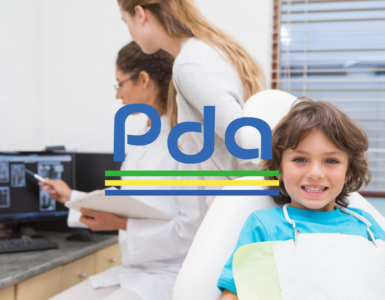Understanding Erectile Dysfunction in Urban Populations
Erectile dysfunction (ED) is one of the most prevalent men’s health issues worldwide, and it carries unique implications for those living in major metropolitan areas such as New York City. Defined as the persistent inability to achieve or maintain an erection sufficient for satisfactory sexual performance, erectile dysfunction not only impacts physical health but also affects emotional well-being, intimate relationships, and overall quality of life. Millions of men experience ED each year, and its frequency tends to increase with age, making it a growing public health concern in densely populated cities.
According to the National Institute of Diabetes and Digestive and Kidney Diseases (NIDDK), erectile dysfunction is influenced by a combination of physical, psychological, and lifestyle-related factors. Chronic medical conditions such as diabetes, hypertension, and cardiovascular disease are strongly associated with ED, while stress, anxiety, and depression can further exacerbate symptoms. In urban populations, these risk factors are often amplified by fast-paced lifestyles, long working hours, poor dietary habits, and higher rates of alcohol or tobacco use. Together, these elements create a complex environment where erectile dysfunction can manifest more frequently and with greater severity.
Another unique challenge in metropolitan areas is the impact of environmental and socioeconomic factors. Pollution, limited access to green spaces, and higher exposure to everyday stressors may indirectly contribute to erectile dysfunction. At the same time, disparities in access to healthcare across different neighborhoods can mean that some men delay seeking treatment until symptoms significantly worsen. This underscores the importance of expanding awareness and education around ED as both a medical condition and a quality-of-life issue for urban communities.
Urban medical centers are increasingly at the forefront of providing innovative treatments for erectile dysfunction. With a dense population and a diverse patient base, cities like New York have become hubs for cutting-edge research, clinical trials, and advanced therapeutic options. These institutions offer a range of evidence-based approaches, from oral medications and hormone therapies to non-invasive devices and regenerative medicine. The high demand for advanced healthcare solutions has accelerated the adoption of new technologies, giving patients access to a broader spectrum of care tailored to individual needs.
Moreover, the presence of world-class specialists and interdisciplinary teams within urban medical centers allows for a more holistic approach to erectile dysfunction. Beyond simply treating the physical symptoms, providers are increasingly focused on integrating lifestyle counseling, mental health support, and preventive strategies into their care models. This evolution in healthcare delivery not only improves patient outcomes but also empowers men to take proactive steps in managing their sexual health.
Key Causes of Erectile Dysfunction
Erectile dysfunction often results from a combination of medical and psychological factors, making it a multifaceted condition that requires careful evaluation. While occasional difficulties with sexual performance can occur in any man, persistent erectile dysfunction typically points to an underlying issue. Some of the most common contributors include:
- Cardiovascular disease: Poor blood flow and vascular health directly impact erectile function. The arteries in the penis are smaller than those in other parts of the body, which means that reduced circulation or arterial blockages often affect erectile performance before symptoms of heart disease appear elsewhere. High blood pressure, high cholesterol, and atherosclerosis are strongly linked to erectile dysfunction. In fact, ED is sometimes referred to as an early indicator of cardiovascular problems, highlighting the importance of thorough cardiac evaluation when men present with erectile concerns.
- Diabetes: Neuropathy and vascular complications from diabetes are leading causes of ED. Chronically elevated blood sugar damages both nerves and blood vessels, impairing the body’s ability to achieve or maintain an erection. Men with diabetes are at significantly higher risk of erectile dysfunction and often develop symptoms at a younger age compared to non-diabetic men. Studies suggest that nearly half of all men with diabetes will experience some degree of ED during their lifetime, making diabetes management a critical factor in sexual health.
- Hormonal imbalances: Low testosterone and thyroid disorders may contribute to erectile dysfunction by disrupting normal hormonal signaling. Testosterone plays a central role in libido and sexual performance, and insufficient levels can reduce desire and impair erection quality. Thyroid imbalances, whether hyperthyroidism or hypothyroidism, also interfere with sexual function by altering metabolism, mood, and vascular health. Proper endocrine evaluation is essential, as hormonal therapies can often restore balance and improve erectile function.
- Neurological disorders: Conditions such as multiple sclerosis or spinal cord injuries interfere with the communication between the brain, nerves, and penis, which is vital for initiating and sustaining an erection. Parkinson’s disease, Alzheimer’s disease, and stroke can also contribute by damaging neural pathways or altering neurotransmitter levels. In urban medical centers, men with neurological disorders are increasingly being offered advanced rehabilitative strategies to help improve erectile function and quality of life.
- Medications: Certain antidepressants, antihypertensives, and other drugs can interfere with erections by altering blood flow, hormone levels, or neurotransmitter activity. While these medications are often necessary to manage serious health conditions, their side effects can create challenges for sexual health. Patients are encouraged to discuss alternative options or dosage adjustments with their physicians if they suspect that medication is affecting their erectile performance.
- Psychological factors: Stress, anxiety, and depression are commonly associated with ED. Mental health plays a central role in sexual performance, as the brain is responsible for triggering the physiological cascade that leads to an erection. Urban populations may be particularly vulnerable due to demanding work environments, financial pressures, and relationship stress. Therapy, counseling, and stress-management techniques can often make a significant difference in overcoming erectile dysfunction when psychological contributors are present.
The Centers for Disease Control and Prevention (CDC) highlights the importance of men addressing underlying health issues early, as ED may serve as a warning sign for broader systemic conditions such as heart disease or metabolic syndrome. By viewing erectile dysfunction not only as a sexual health issue but also as a marker of overall wellness, men can take proactive steps toward prevention, early diagnosis, and treatment of more serious health concerns.

Traditional Treatment Approaches
Historically, erectile dysfunction treatment in urban medical centers began with conservative options. These initial strategies focused on improving physical health, addressing psychological factors, and providing men with accessible methods to restore sexual performance. While newer technologies and regenerative therapies have emerged in recent years, these traditional approaches continue to serve as an essential foundation for care.
- Oral medications (PDE5 inhibitors): Drugs like sildenafil and tadalafil remain the most common first-line treatments for erectile dysfunction. These medications work by enhancing blood flow to the penis, making it easier to achieve and maintain an erection in response to sexual stimulation. They are widely prescribed due to their effectiveness, relatively few side effects, and ease of use. In urban populations, where men often seek fast and reliable solutions, PDE5 inhibitors have become a cornerstone of treatment. However, they may not be suitable for individuals with certain heart conditions or those taking nitrates, making medical supervision critical.
- Lifestyle modifications: Weight loss, improved nutrition, and increased exercise help support vascular health, which is directly linked to erectile function. A diet rich in whole foods, lean proteins, and antioxidants can improve circulation and reduce the risk of chronic conditions like diabetes and cardiovascular disease, both leading causes of ED. Regular physical activity strengthens the cardiovascular system, reduces stress, and promotes hormone balance, all of which contribute to better sexual health. For many men in metropolitan areas, the challenge lies in adopting these changes within the context of demanding work schedules and limited time, but even small adjustments can have measurable benefits.
- Psychological therapy: Addressing performance anxiety and relationship stressors can enhance results, especially when erectile dysfunction has a psychological component. Therapy may include cognitive-behavioral techniques, sex therapy, or couples counseling, helping men and their partners navigate emotional barriers that interfere with intimacy. In urban settings, where high stress levels and fast-paced lifestyles are common, psychological support is often a vital part of a comprehensive ED treatment plan. By treating the mind and emotions alongside the body, men are more likely to experience sustainable improvements in sexual performance and overall well-being.
These strategies continue to play an important role, but they are now often supplemented by advanced therapies that reflect the latest medical research. Urban medical centers are integrating traditional methods with modern approaches, creating individualized treatment plans that address both the root causes of erectile dysfunction and the unique lifestyle demands of patients living in major cities.
Advances in Medical Therapies
Urban healthcare providers are increasingly offering cutting-edge treatments for ED, integrating regenerative medicine, non-invasive procedures, and advanced biological therapies into standard care. These options represent a significant shift from merely managing symptoms toward actively repairing and restoring erectile function at the cellular and vascular level. Some of the most promising advances include:
Shockwave Therapy
Low-intensity shockwave therapy has emerged as a non-invasive treatment that stimulates blood vessel growth and enhances penile blood flow. By delivering targeted acoustic waves to penile tissue, this therapy triggers the release of growth factors, promoting angiogenesis (the formation of new blood vessels) and improving circulation. It is particularly effective in men with vascular-related erectile dysfunction, especially those who do not respond well to oral medications. Unlike traditional pharmacological treatments, shockwave therapy aims to address the root cause of ED by enhancing natural physiological function rather than providing a temporary effect. Urban medical centers have been early adopters of this technology due to high patient demand and access to advanced clinical research.
Platelet-Rich Plasma (PRP) Injections
PRP therapy involves concentrating the patient’s own platelets and injecting them into penile tissue to encourage tissue repair and regeneration. Platelets are rich in growth factors that support healing, collagen production, and new blood vessel formation. This approach is considered a promising regenerative treatment, particularly for men with ED linked to vascular or tissue damage. Because PRP is derived from the patient’s own blood, the risk of rejection or adverse immune reaction is minimal. Clinics in metropolitan areas have embraced PRP injections as part of integrative men’s health programs, often combining them with lifestyle modifications and psychological support to maximize results.
Stem Cell Therapy
Stem cell research is progressing rapidly, and clinical trials suggest that stem cell injections may restore erectile function by repairing damaged tissues and enhancing vascular health. The therapy typically involves harvesting stem cells from bone marrow or adipose tissue and injecting them into the penile region. These cells have the potential to differentiate into various tissue types, aiding in the regeneration of smooth muscle and endothelial cells essential for erections. While stem cell therapy is still largely experimental and not yet FDA-approved, it represents one of the most exciting frontiers in the treatment of erectile dysfunction. Leading urban healthcare providers are often involved in these early-stage clinical trials, giving patients in major metropolitan areas access to therapies that may shape the future of men’s sexual health care.
Together, these advanced medical therapies highlight the transition from symptom management to restorative treatment in erectile dysfunction care. By offering solutions that address the biological underpinnings of ED, urban medical centers are redefining standards of care and expanding the possibilities for men seeking lasting improvements in sexual health.
Advanced Pharmacological Combinations
While PDE5 inhibitors remain common as the standard first-line therapy, physicians in urban centers are also exploring combination therapies designed to enhance effectiveness for men who do not respond fully to a single treatment. These advanced approaches reflect the growing emphasis on personalized medicine, where multiple strategies are tailored to a patient’s unique health profile and specific causes of erectile dysfunction.
One of the most frequently used methods is pairing oral medications with hormone therapy, particularly in men with low testosterone levels. Restoring hormone balance not only improves libido but also enhances the efficacy of PDE5 inhibitors, leading to more consistent results.
Another approach involves combining oral drugs with topical agents applied directly to penile tissue. These agents can increase local blood flow, providing an additional boost to the systemic effects of PDE5 inhibitors. In certain cases, intracavernosal injections directly administered into penile tissue are introduced alongside oral therapy for men with more severe vascular or neurological erectile dysfunction. These injections often deliver fast and reliable results, making them valuable options for patients unresponsive to oral medication alone.
For men seeking expert guidance, consulting an erectile dysfunction doctor NYC offers access to specialized medical practices where such advanced pharmacological combinations are part of the treatment options. Urban centers are uniquely positioned to provide these innovative therapies due to the availability of multidisciplinary specialists, cutting-edge research, and patient populations seeking customized care.
By expanding beyond single-drug therapies, these pharmacological combinations underscore the progress of urban healthcare in addressing erectile dysfunction comprehensively. Patients benefit not only from improved outcomes but also from the reassurance that multiple evidence-based strategies are available to meet their individual needs.
Surgical Innovations
For men who do not respond to conservative or pharmacological treatments, surgical options remain a viable and often highly effective path. While surgery for erectile dysfunction was once considered a last resort, advancements in medical technology have significantly improved both outcomes and patient satisfaction. Today, surgical innovations are safer, more effective, and tailored to meet the lifestyle needs of modern patients living in major urban centers.
- Penile implants: Modern implants are more durable, discreet, and natural-feeling than earlier models, offering men a reliable solution when other therapies fail. There are two primary types of implants: inflatable devices and malleable (semi-rigid) rods. Inflatable implants allow men to control when and how long they maintain an erection, closely mimicking natural sexual function, while malleable implants provide simplicity and ease of use. Advances in surgical techniques have reduced recovery times and minimized the risk of complications, making penile implants a trusted option for men with severe erectile dysfunction.
- Vascular surgery: Procedures aimed at restoring blood flow for men with severe vascular damage are another innovation in this field. In cases where arterial blockages prevent sufficient blood flow to the penis, microvascular surgery can help restore circulation and improve erectile function. Similarly, venous ligation procedures address “venous leak,” a condition in which blood drains too quickly from the penis, preventing sustained erections. While vascular surgery is not suitable for all patients, it represents a critical option for younger men or those whose erectile dysfunction is directly linked to trauma or vascular injury.
Those seeking an erectile dysfunction doctor New York City may be guided toward these surgical options when other treatments prove insufficient. Specialized medical practices in metropolitan areas are uniquely positioned to offer these procedures, as they bring together experienced urologic surgeons, advanced hospital facilities, and access to the latest post-operative rehabilitation protocols.
Ultimately, surgical innovations underscore the evolving nature of erectile dysfunction treatment transforming it from a condition managed primarily with medication to one that can, in many cases, be corrected with long-term, restorative solutions. For men who have exhausted other therapies, these surgical approaches provide not just improved sexual performance, but also renewed confidence and quality of life.

The Role of Urologists in Urban Settings
Urologists in metropolitan centers such as Manhattan are uniquely positioned to deliver comprehensive ED care. Their expertise spans both medical and surgical approaches, enabling them to tailor treatments to the needs of a diverse patient population.
Patients looking for a urologist Manhattan often seek care not only for erectile dysfunction but also for related conditions such as premature ejaculation, prostate disorders, and urinary tract health. A holistic approach ensures that ED is addressed within the broader context of men’s health.
Psychological and Relationship Considerations
Erectile dysfunction is rarely a condition of physiology alone. Psychological distress often exacerbates symptoms, particularly in the high-stress environment of large cities. Relationship dynamics can also play a role, making counseling and therapy important adjuncts to medical care.
A urology doctor NYC may recommend that patients pursue a combination of psychological support and medical therapy, ensuring that treatment addresses both the mind and body. This comprehensive model has been shown to increase long-term satisfaction and outcomes.
Telemedicine and Digital Health Integration
Urban medical centers are leading the adoption of telemedicine, which has expanded access to ED treatment. Virtual consultations allow patients to receive professional guidance while maintaining privacy and convenience.
Digital health tools also support erectile dysfunction management, including:
- Mobile apps for tracking sexual health and treatment outcomes.
- Online therapy programs for performance anxiety.
- Remote prescription management for ED medications.
These innovations reduce barriers to care and make it easier for men in busy metropolitan areas to pursue treatment discreetly.
Public Health Perspectives
The U.S. Department of Health & Human Services (HHS) emphasizes that erectile dysfunction is not simply a quality-of-life issue but can indicate serious underlying health conditions. Urban centers, with their diverse and aging populations, face heightened challenges in ensuring that men receive timely evaluations and interventions.
As ED treatment becomes increasingly advanced, urban medical centers are playing a crucial role in raising awareness and normalizing conversations about men’s sexual health.
Looking Ahead: The Future of ED Treatment in Urban Medical Centers
The future of erectile dysfunction treatment in cities such as New York lies in the continued integration of advanced technologies, regenerative medicine, and holistic care approaches. Innovations such as gene therapy, personalized medicine, and artificial intelligence-driven diagnostics are expected to further refine treatment strategies.
As research progresses, urban urology specialists will remain at the forefront of translating new discoveries into accessible therapies. For patients, this means greater opportunities to restore sexual health, confidence, and overall well-being.
Encouraging Further Exploration
Erectile dysfunction remains a complex and multifaceted condition, but urban medical centers have expanded the range of treatment options beyond traditional methods. From advanced pharmacology to regenerative therapies and surgical innovations, men in metropolitan areas have access to some of the most comprehensive care available.
For more detailed information, readers may explore resources provided by the NIDDK, the CDC Men’s Health, and the HHS. These authoritative sources offer valuable guidance on erectile dysfunction, related health concerns, and strategies for maintaining men’s health across the lifespan.





